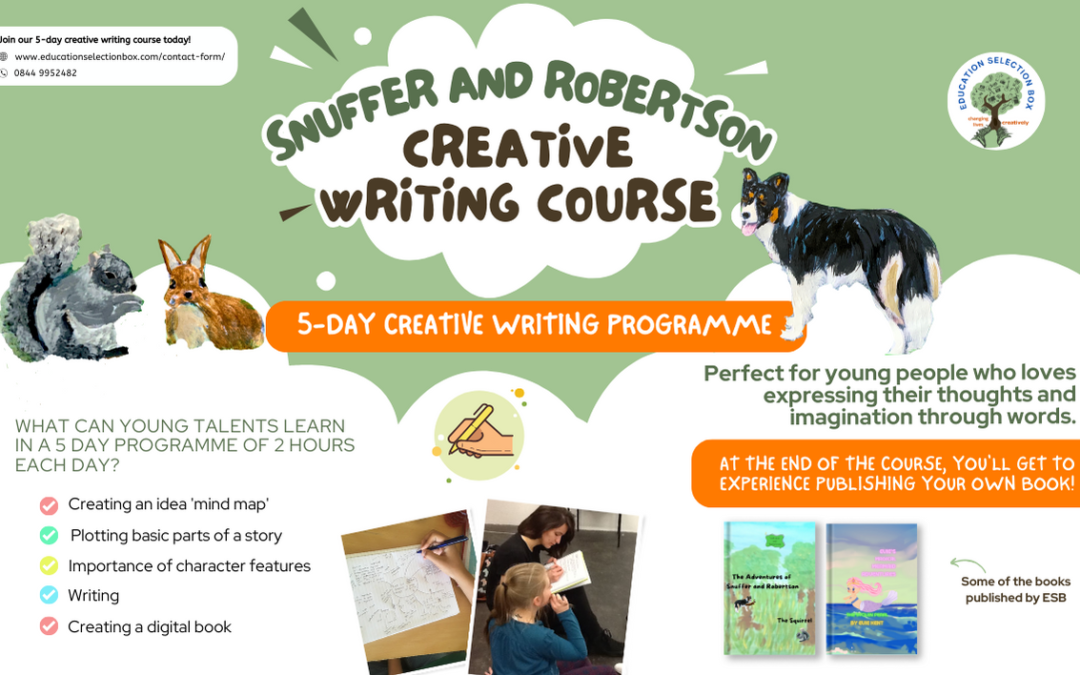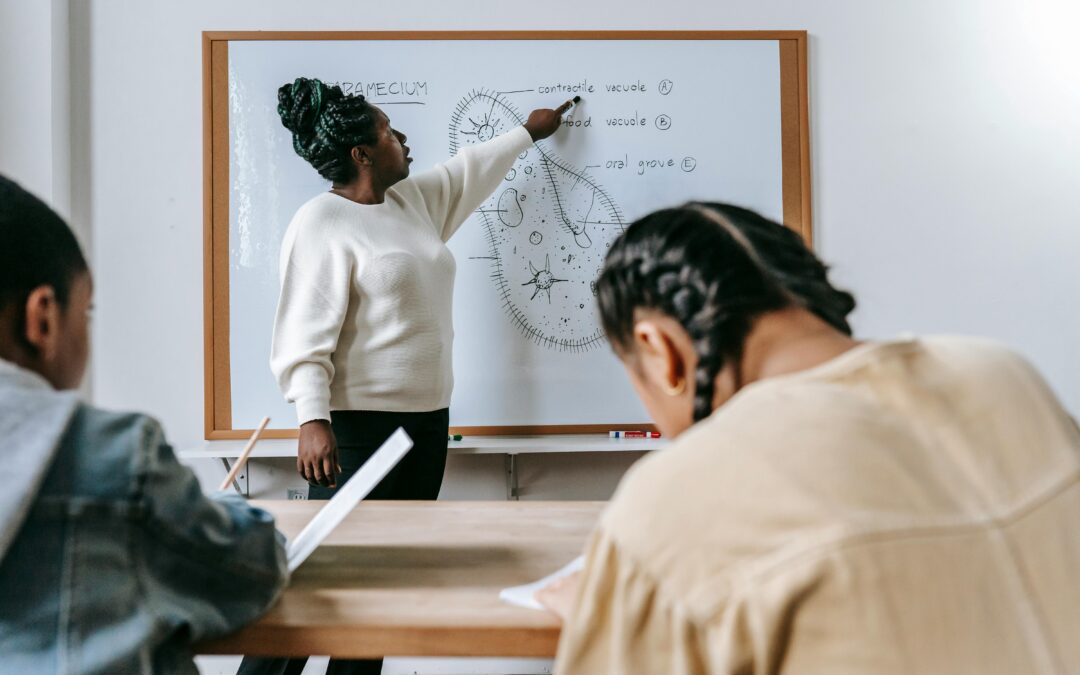
by Helen Kenworthy | Apr 30, 2024 | Education
In the realm of education, the journey to mastering Maths and English is a multifaceted one, requiring a blend of effective teaching methods, engaging strategies, and insightful assessments. This article aims to provide a comprehensive guide to teaching Maths and English, focusing on various teaching methods, strategies for engaging students, and tips for assessing progress. Whether you’re a seasoned educator or a newcomer to the field, this guide will offer valuable insights and practical advice to enhance your teaching approach.
Understanding the Learner
The first step in mastering Maths and English lies in understanding the learner. As highlighted by the EDC, teachers must be aware of the wide array of experiences and needs of each student, especially those who are English learners (ELs)
This understanding is crucial for providing appropriate support tailored to each student’s strengths and needs. For instance, teachers should inquire about students’ English-language proficiency levels and consider their educational backgrounds. This information helps in tailoring lessons to meet the unique needs of each student, ensuring that all students, including those who are ELs, can engage deeply in learning
Engaging Students with Challenging Tasks
Engaging students with challenging mathematics tasks is a key strategy for improving all students’ learning and achievement. This approach not only stimulates intellectual curiosity but also fosters a deeper understanding of mathematical concepts. By presenting students with complex problems that require critical thinking and problem-solving skills, teachers can help students develop a strong foundation in mathematics. This strategy is particularly beneficial for EL students, who may need additional support to fully participate in classroom mathematical discourse
Maths Challenges
- Problem-Solving Puzzles: Introduce students to complex puzzles that require logical reasoning and problem-solving skills. These can range from simple logic puzzles to more complex ones that involve geometry, algebra, or statistics.
- Real-World Problems: Incorporate real-world problems into your lessons. For example, you could use a budgeting scenario to teach students about percentages, or a traffic flow problem to introduce them to ratios and proportions.
- Mathematical Modeling: Have students create models to represent mathematical concepts. This could involve using physical objects, digital simulations, or even graph paper to model concepts like fractions, decimals, or geometric shapes.
- Mathematical Storytelling: Encourage students to create stories that incorporate mathematical concepts. This can help them understand the practical applications of math and improve their storytelling skills.
- Mathematical Games: Incorporate games that require mathematical skills into your lessons. This could include games that involve strategy, probability, or geometry.
English Challenges
- Creative Writing Prompts: Provide students with creative writing prompts that require them to think critically about their writing. This could involve writing a story from a character’s perspective, creating a dialogue between two characters, or writing a persuasive essay.
- Debate Topics: Introduce students to a variety of debate topics that require them to research, analyze, and present their arguments. This can help them develop their research skills and improve their public speaking abilities.
- Poetry and Rhyming: Encourage students to write poetry or create rhymes that incorporate mathematical concepts or English language patterns. This can help them appreciate the beauty and complexity of language.
- Language Exploration: Have students explore different languages or dialects and analyze how they differ from English. This can help them understand the richness and diversity of the English language.
- Public Speaking Challenges: Organize public speaking challenges where students have to present a topic of their choice. This can help them develop their speaking skills and learn to articulate their thoughts clearly.
By incorporating these challenging tasks into your Maths and English lessons, you can create a dynamic and engaging learning environment that motivates students to explore and understand these subjects more deeply.
Supporting Language Development in Mathematics
Supporting the development of students’ language in mathematics is another essential strategy. This involves integrating both productive and receptive language into mathematics lessons. Productive language refers to the use of language in creating messages, while receptive language involves understanding and responding to messages. By incorporating these forms of language into lessons, teachers can ensure that students are not only learning mathematical concepts but also improving their language skills. This dual approach is particularly important for EL students, who may benefit from visual aids, acting out problems, and using sentence starters to scaffold their explanations
Employing Multimodal Representation or Communication
Multimodal representation or communication involves using a combination of speaking, writing, diagramming, gesturing, and other forms of communication to convey mathematical concepts. This strategy can significantly enhance students’ understanding and retention of mathematical information. For example, using pictures or diagrams to illustrate mathematical problems can make abstract concepts more accessible to students. Moreover, encouraging students to explain their mathematical thinking through speaking, writing, or gesturing can deepen their understanding of the subject matter
Classroom Management Techniques
Effective classroom management is crucial for creating a conducive learning environment. This involves setting clear expectations, maintaining discipline, and ensuring that all students have the opportunity to participate in class discussions. Teachers can employ various classroom management techniques, such as using visual aids, creating a positive learning environment, and providing individualized feedback to students. These strategies can help in maintaining student engagement and ensuring that all students, regardless of their proficiency level, feel valued and supported
Assessing Progress and Adjusting Strategies
Assessing progress is a critical component of teaching Maths and English. Teachers should regularly evaluate students’ understanding and application of mathematical concepts and language skills. This can be done through formative assessments, such as quizzes and in-class activities, as well as summative assessments, like tests and projects. By analyzing these assessments, teachers can identify areas where students may need additional support and adjust their teaching strategies accordingly. This ongoing evaluation ensures that teaching methods remain effective and responsive to the needs of the students.
Conclusion
Mastering Maths and English requires a holistic approach that combines effective teaching methods, engaging strategies, and insightful assessments. By understanding the learner, engaging students with challenging tasks, supporting language development, employing multimodal representation, and employing effective classroom management techniques, teachers can create a dynamic and supportive learning environment. Regular assessment and adjustment of teaching strategies ensure that all students, including those who are English learners, can achieve success in their mathematical and language learning journeys.
In conclusion, the journey to mastering Maths and English is a rewarding one, filled with opportunities for growth and learning. By embracing the strategies outlined in this guide, educators can create a nurturing and effective learning environment that empowers students to reach their full potential.

by Helen Kenworthy | Apr 10, 2024 | Education, Resources, Uncategorized
Welcome to our journey through the enchanting world of “Snuffer & Robertson,” a delightful children’s book that transports readers into the heart of a friendship between a wise old collie dog named Robertson and a playful rabbit named Snuffer. This blog will take you on a tour of the book’s captivating story, its beautiful illustrations, and why it’s a must-read for every child aged 3 to 8.
Background of “Snuffer & Robertson”
“Snuffer & Robertson” is the first in a series of books that celebrate friendship, acceptance of differences, and the joy of adventure. Written by Helen and Val Lewis, a mother-daughter duo with a wealth of experience in working with young children, this book is not just a story but a journey of discovery and learning. The story of Snuffer and Robertson is inspired by the friendship between Robertson, a collie dog, and Freddie, a much-loved furry member of the Lewis family.
The Art and Design of “Snuffer & Robertson”
The book’s illustrations are hand-drawn, showcasing the unique art style of Helen and Val Lewis. The designs are vibrant and engaging, with a focus on the characters’ expressions and the lush, woodland setting that serves as their playground. The layout is designed to encourage reading together, with lines split into two colors for easy reading by younger children, and sentences of varying difficulty to challenge and engage readers of all ages.
Why Every Kid Should Read “Snuffer & Robertson”
- “Snuffer & Robertson” is more than just a children’s book; it’s a tool for learning and growth. The story, filled with rhymes and adventures, is written with simple sentences, making it accessible for young readers to read on their own.
- It encourages children to practice different tenses, explore new words, and engage in discussions about language structures.
- The book also supports the work of the RYTC (Really Youthful Theatre Company) and Education Selection Box, contributing to children’s art and drama therapy charities in the West Midlands.
Reader Recommendations
For children aged 3 to 8, “Snuffer & Robertson” is a perfect blend of fun, learning, and emotional connection. Whether you’re reading it together, by yourself, or with a parent, this book is sure to captivate and inspire.
To further explore the themes and lessons in the book, consider enrolling in the RYTC Drama Course or the Education Selection Box Creative Writing Course.
Conclusion
“Snuffer & Robertson” is a testament to the power of storytelling in education. It’s a book that not only entertains but also encourages children to reach their full potential. Whether you’re a parent looking for a book to share with your child or a teacher seeking resources for your classroom, “Snuffer & Robertson” is a gem worth discovering.
Where to Purchase
You can order the paperback on Amazon or the e-book version here

by Helen Kenworthy | Apr 2, 2024 | Education
Hello, high schoolers! Today, we’re diving into a topic that might seem a bit intimidating at first glance, but trust me, it’s going to be a game-changer. We’re going to explore “Mathematics Beyond the Textbook: Real-World Applications for High Schoolers.” This isn’t just about solving equations or memorizing formulas; it’s about understanding how math is everywhere around us, in our daily lives, and how it can help us solve real-world problems.
Why is Mathematics Important?
Before we dive into the applications, let’s take a moment to appreciate the beauty and importance of mathematics. Mathematics is the language of the universe. It’s the foundation of everything from the architecture of buildings to the algorithms that power our smartphones. It’s the tool that allows us to predict weather patterns, calculate the trajectory of a rocket, and even understand the complexities of the human brain.
But why is it so important for high schoolers? Well, for one, a solid understanding of mathematics can open up a world of opportunities. Whether you’re aiming for a career in engineering, finance, or even a career in the arts, a strong foundation in math can give you an edge. It’s not just about getting good grades; it’s about understanding the world around you and how you can make a difference.
Real-World Applications of Mathematics
Now, let’s get into the nitty-gritty. Here are some real-world applications of mathematics that you might find surprising:
1. Navigation and GPS
Have you ever wondered how your phone knows where you are? That’s thanks to mathematics. GPS systems use complex equations to calculate your position based on the time it takes for a signal to travel from the satellite to your phone. Without math, we wouldn’t be able to navigate the world with ease.
2. Cryptography
Imagine a world where your emails and messages are completely secure. That’s possible thanks to cryptography, a field of mathematics that involves creating codes to encrypt and decrypt messages. This is how your online banking information is protected.
3. Climate Modeling
Climate change is a pressing issue, and mathematicians are at the forefront of understanding and predicting its effects. By using mathematical models, scientists can predict future climate patterns and help us develop strategies to mitigate the impact.
4. Sports Analytics
From predicting the outcome of a game to analyzing player performance, sports analytics relies heavily on mathematics. Data scientists use statistical models to make predictions and decisions, helping teams and players improve.
5. Financial Markets
The stock market is a complex system that relies on mathematical models to predict future trends. These models help investors make informed decisions, and they’re crucial for the economy as a whole.
Conclusion
As high schoolers, you might not see the direct application of math in your daily life right now. But trust me, it’s there. Every time you use a smartphone, drive a car, or even when you’re planning your college courses, you’re using math. And the more you understand it, the more you’ll see its impact on the world around you.
So, let’s embrace mathematics not just as a subject to be studied, but as a tool to understand and shape the world. After all, math is the language of the universe, and it’s up to us to learn and speak it.
Remember, the key to mastering math is not just memorizing formulas but understanding the principles behind them. So, keep exploring, keep asking questions, and keep learning. Because the world of mathematics is vast, and there’s so much more to discover.
Happy learning, and may your journey through math be as exciting and rewarding as it is enlightening!

by Helen Kenworthy | Mar 26, 2024 | Education
Learning mathematics can sometimes feel like a daunting task, but with the right strategies and techniques, you can transform this challenge into a rewarding journey. Whether you’re a student aiming to improve your grades or a parent seeking to support your child’s academic success, this guide will provide you with insights and strategies to help you effectively learn mathematics.
Understanding the Basics
The foundation of any learning endeavor is a solid understanding of the basics. In mathematics, this means having a strong grasp of fundamental concepts such as addition, subtraction, multiplication, and division. These operations form the building blocks upon which more complex mathematical ideas are built. Spend time reviewing these concepts, ensuring you understand them thoroughly before moving on to more advanced topics.
Study Techniques
1. Spaced Repetition
Spaced repetition is a powerful study technique that involves reviewing information at increasing intervals over time. This method is particularly effective for memorizing formulas, theorems, and historical facts in mathematics. The idea is to review the material immediately after learning it, then review it again after a few days, weeks, or months, depending on how well you remember it. This technique helps reinforce memory and understanding over time.
2. Active Recall
Active recall is the practice of actively trying to remember information without looking at the material. This technique strengthens your memory and understanding of the material. After studying, take a few minutes to recall the information without looking at your notes. This can be done by writing the information in your own words or explaining it to someone else.
3. Interleaving
Interleaving involves mixing different topics or types of problems during a study session. This technique helps improve problem-solving skills and adaptability in mathematics. Instead of focusing on one topic at a time, mix problems from different areas of mathematics to challenge your brain. This approach can enhance your ability to apply mathematical concepts in various contexts and improve your overall problem-solving skills.
Time Management Tips
- Prioritize Your Study Time
Identify the most challenging topics and allocate more time to study them. Prioritize your study sessions based on the difficulty level of the material and your current understanding. This approach ensures that you focus your efforts on areas where you need the most improvement.
- Break Down Large Study Sessions
Breaking down large study sessions into smaller, manageable chunks can make studying more efficient and less overwhelming. For example, study for 25 minutes, then take a 5-minute break before continuing. This technique, known as the Pomodoro Technique, can help maintain focus and productivity. It also prevents burnout, allowing you to study more effectively over longer periods.
Approaching Different Types of Problems
Before attempting to solve a problem, take a moment to understand what is being asked. Break down the problem into smaller, manageable parts. This approach can make complex problems seem more approachable. Understanding the problem is the first step to finding a solution.
Visual aids, such as diagrams, charts, and graphs, can be incredibly helpful in understanding mathematical concepts. They can provide a visual representation of abstract ideas, making it easier to grasp complex concepts. Visual aids can also help you see patterns and relationships that might not be immediately apparent in text or numbers.
- Practice, Practice, Practice
The key to mastering mathematics is practice. The more problems you solve, the better you’ll become at identifying patterns, applying formulas, and understanding mathematical concepts. Practice is not just about repetition; it’s about understanding the underlying principles and applying them in different contexts.
We encourage you to share your own strategies and experiences in the comments section below. Your insights can inspire others and help create a community of learners who support each other’s growth in mathematics. Sharing your strategies can also provide valuable feedback and help you refine your own learning process.
Conclusion
Learning mathematics is a journey, and with the right strategies and a positive mindset, you can navigate this journey with confidence and success. Remember, every challenge is an opportunity to learn and grow. So, embrace the process, stay curious, and keep exploring the world of mathematics. Whether you’re tackling algebra, calculus, or statistics, the key to mastery lies in understanding the basics, applying effective study techniques, managing your time wisely, and practicing regularly.

by Helen Kenworthy | Mar 19, 2024 | Education
In the realm of science education, the traditional classroom setting is evolving, with a shift towards more interactive, engaging, and effective teaching methods. Science tutoring is no exception, as tutors and educators seek innovative ways to make learning more accessible, enjoyable, and impactful. This blog explores some of the most innovative science tutoring techniques, offering a glimpse into the future of science education.
The Power of Hands-On Learning
One of the most effective ways to engage students in science is through hands-on learning. Experiments and activities that allow students to explore scientific concepts firsthand can significantly enhance their understanding and retention. For example, a simple experiment using household materials to demonstrate the principles of gravity or electricity can be a powerful learning tool.
Example Activity:
Building a Simple Voltage Generator:
Using a battery, a light bulb, and a few wires, students can create a simple voltage generator. This activity not only teaches about electricity but also about the importance of safety in scientific experiments.
The Role of Technology in Science Tutoring
Technology has become an indispensable tool in science education, offering a wealth of resources and platforms for interactive learning. From educational apps to virtual reality experiences, technology can make science come alive in ways that traditional methods cannot.
Example Resource:
PhET Interactive Simulations:
PhET offers a wide range of interactive physics simulations that can be used to teach various scientific concepts. These simulations are engaging, allowing students to explore phenomena in a safe and controlled environment.
Incorporating Storytelling and Narratives
Storytelling and narratives can make abstract scientific concepts more relatable and memorable. By weaving scientific principles into stories, tutors can help students visualize and understand complex ideas.
Example Technique:
The Tale of the Atom:
Create a story that follows the journey of an atom from its creation to its eventual decay. This narrative can help students understand the concept of radioactivity and the cycle of elements.
The Importance of Field Trips and Field Studies
Field trips and field studies offer a unique opportunity for students to apply what they’ve learned in a real-world context. These experiences can deepen understanding, foster curiosity, and inspire a lifelong love for science.
Example Field Trip:
Visiting a Local Aquarium:
A visit to a local aquarium can provide students with a hands-on experience of marine biology, ecology, and conservation efforts. This can be a powerful way to learn about the importance of biodiversity and the impact of human activities on the environment.
Collaborative Learning and Group Projects
Collaborative learning and group projects can enhance students’ problem-solving skills, critical thinking, and teamwork. These activities encourage students to work together to solve scientific puzzles and explore new ideas.
Example Group Project:
Building a Solar-Powered Device:
Students can work in groups to design and build a simple solar-powered device, such as a small fan or light. This project encourages creativity, teamwork, and an understanding of renewable energy sources.
Conclusion
Innovative science tutoring techniques are not just about making learning more engaging; they’re about preparing students for a future where science is at the heart of innovation and discovery. By incorporating hands-on activities, leveraging technology, using storytelling, planning field trips, and fostering collaborative learning, tutors can create a learning environment that is both effective and inspiring. As we look to the future of science education, these innovative techniques will undoubtedly play a crucial role in shaping the next generation of scientists, inventors, and thinkers.

by Helen Kenworthy | Mar 13, 2024 | Education
As we celebrate British Science Week, a time when we celebrate the wonders of science and the innovative minds that drive its progress, it’s a perfect opportunity to pay tribute to the contributions of British scientists and the profound impact of science on our lives. This week, let’s honor the legacy of those who have dared to explore the unknown, challenge the status quo, and push the boundaries of what’s possible.
The Legacy of British Scientists
British scientists have made groundbreaking contributions across various fields, from physics and chemistry to biology and medicine. Their work has not only advanced our understanding of the world but also shaped the way we live, work, and interact with our environment.
- Sir Isaac Newton, for instance, revolutionized our understanding of the physical world with his laws of motion and universal gravitation. His work laid the foundation for modern physics, influencing countless scientific discoveries that followed.
- Charles Darwin, with his theory of evolution by natural selection, challenged our perception of life on Earth. His work has profoundly impacted biology, ecology, and our understanding of biodiversity.
- Alexander Fleming, known for discovering penicillin, saved countless lives and transformed medical care. His work marked the beginning of antibiotics, a cornerstone of modern medicine.
- Dorothy Hodgkin, the only British woman to receive the Nobel Prize in Chemistry, discovered the atomic structure of penicillin. In 1954, she published work discovering the structure of vitamin B12. Hodgkin went on to reveal the structure of insulin, a project she’d been working on for decades. Incredibly, she worked throughout her life while suffering from rheumatoid arthritis.
- Rosalind Franklin, a chemist and X-ray crystallographer, took images of DNA by X-ray diffraction. These images led to the discovery of the DNA double helix, which was crucial in understanding molecular biology.
The Impact of Scientific Discoveries
The discoveries made by these and many other British scientists have had a profound impact on society. From advancements in technology that have transformed our daily lives to breakthroughs in medicine that have extended human life expectancy, science has been at the forefront of progress.
Technology has become an integral part of our lives, from smartphones and social media to electric cars and renewable energy sources. These innovations have not only made our lives more convenient but also opened up new possibilities for exploration and discovery.
Medicine has seen remarkable advancements, from vaccines that protect against deadly diseases to treatments that can cure previously incurable conditions. These developments have significantly improved health outcomes and quality of life.
Environmental Science has led to a greater understanding of our planet’s ecosystems and the importance of sustainability. This knowledge has driven efforts to protect endangered species, combat climate change, and promote sustainable practices.
Celebrating British Science Week
As we celebrate British Science Week, let’s take a moment to appreciate the contributions of British scientists and the transformative power of science. This week is a reminder of the curiosity, ingenuity, and dedication that drive scientific discovery. It’s a celebration of the human spirit’s ability to question, explore, and innovate.
“Science is the great antidote to the poison of enthusiasm and superstition.” – Isaac Newton
This quote from Sir Isaac Newton encapsulates the spirit of scientific inquiry. It reminds us that science is not just about discovery but also about critical thinking, skepticism, and the relentless pursuit of truth.
As we honor the legacy of British scientists and celebrate the wonders of science, let’s also recognize the importance of fostering a culture of curiosity and innovation. Let’s inspire the next generation of scientists and innovators, encouraging them to explore the unknown, challenge the status quo, and push the boundaries of what’s possible.
Happy British Science Week!






